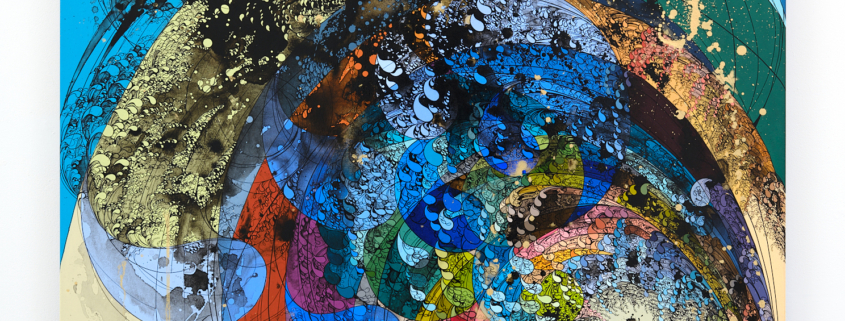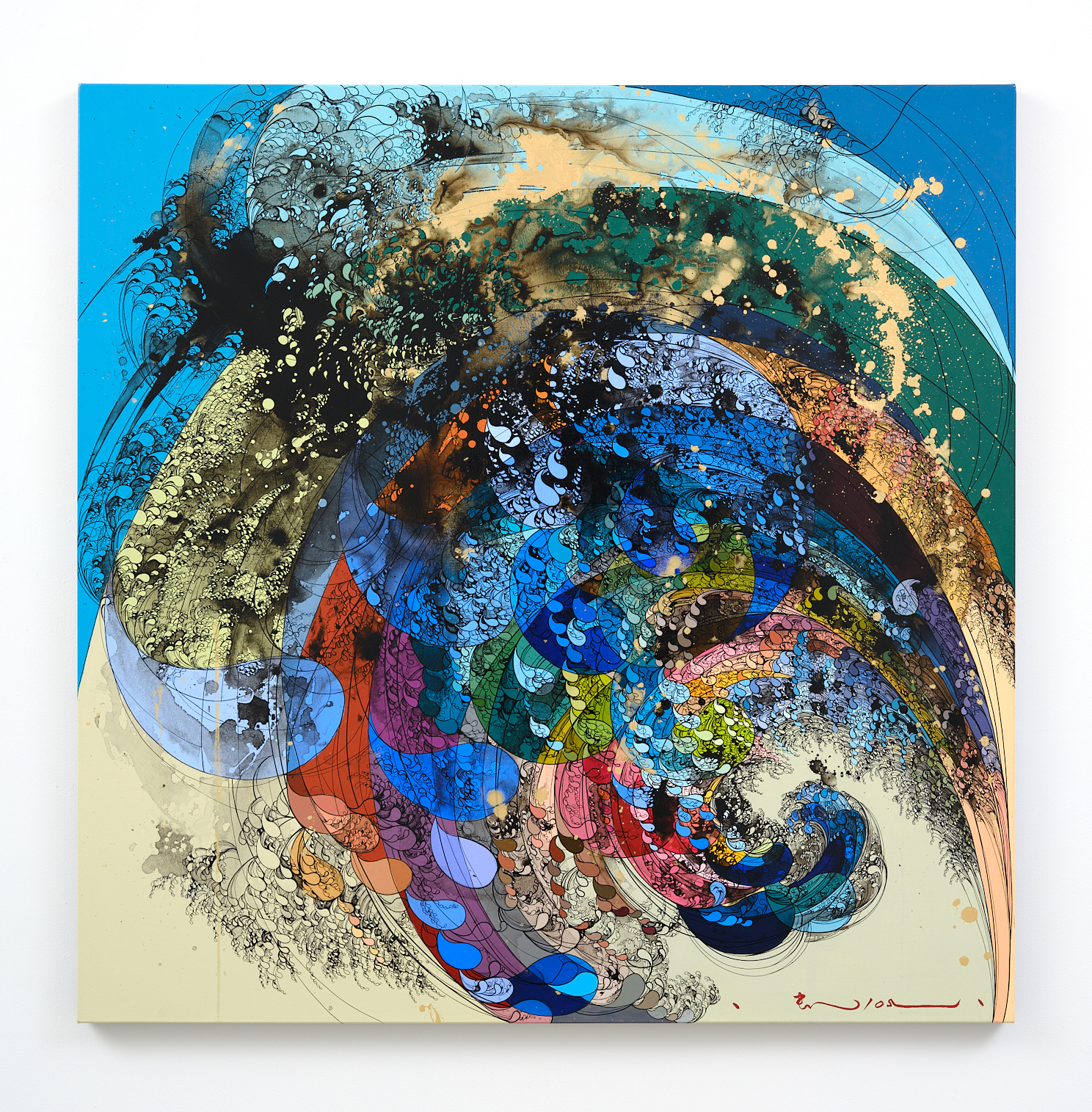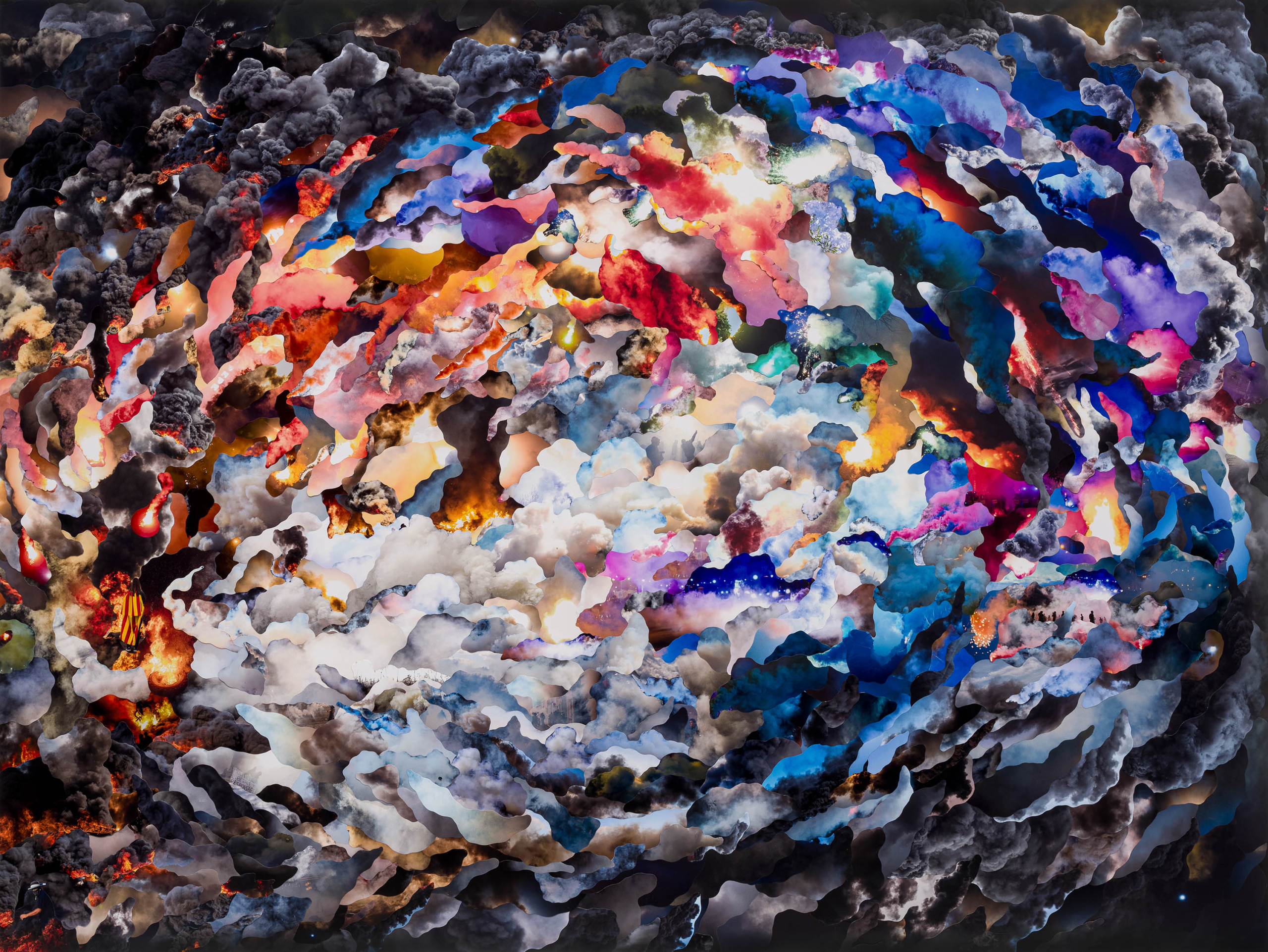
Sanderson are pleased to announce the exhibition Perpetual featuring a new suite of paintings by Shintaro Nakahara (b.1972, Saitama, Japan) and Yoshiko Nakahara (b.1978, Kanagawa, Japan).
Using waves as the main motif, the inspiration for this series emerged from contemplative moments at the beach. The artists describe the feeling of watching waves roll in and explain that “although time is invisible, the waves are “the time” that you can see.”
For the Nakahara’s, the most fascinating thing is that not one wave is the same. This is also true in their works; there are hundreds and thousands of strokes back and forward with each stroke possessing a unique quality yet working together to create a unified composition.
Through years of collaboration, the artists have developed a unique process where they each contribute distinct elements to the works, with the finished product only possible through their alliance – a process they have termed ‘the third artist’. In her essay, Lana Lopesi describes the Nakahara’s process as a ‘mental collaboration’, a series of questions and answers that go back and forth through line and colour. [1] Yoshiko begins, often working exclusively with black ink, creating an overall form and pattern on the canvas which Shintaro responds to by applying solid blocks of colour, sometimes following Yoshiko’s lead but other times applying colour over the lines, creating the weight of the composition. Yoshiko then applies meticulous small-scale strokes and washes. Their paintings are a conversation that continues until both the artists agree that the work is complete.
The concept of duration has been revisited time and again within modern and contemporary art. Abstract painters like Agnes Martin use repeated mark-making to capture notions of the passing of time. This is evident in the Nakahara’s compositions, where their works are the product of countless hours of intricate brushwork and cooperation. The artists explain that they want to capture time; past, present and future, through their paintings.
Both Shintaro and Yoshiko have worked as horologists (watchmakers and specialists in the study of timekeeping) alongside their painting careers. Thinking about this, there are distinct parallels between their painting practice and the art of watch making. There is a precision and an intricacy that is shared – along with the fascination with the fleeting nature of time and how it is measured and valued. The Nakahara’s fascination with time is a recurring theme; the artists often referencing the natural world, and their works encapsulating a contemplative sense of ‘deep time’. Similar feelings emerge when looking at the stars or watching waves break on a shore. These paintings hold a cosmic energy and evoke a sense of immeasurable complexity and vastness.




